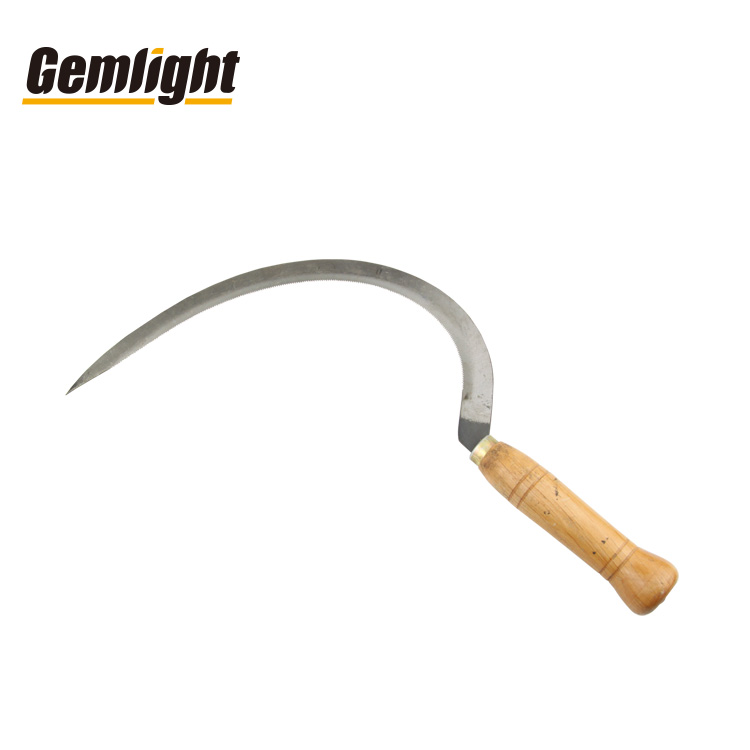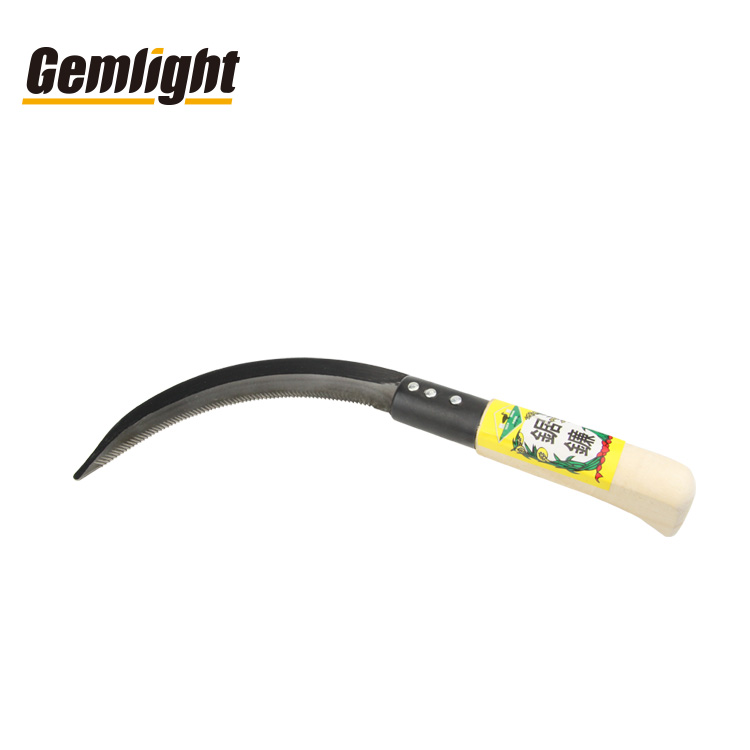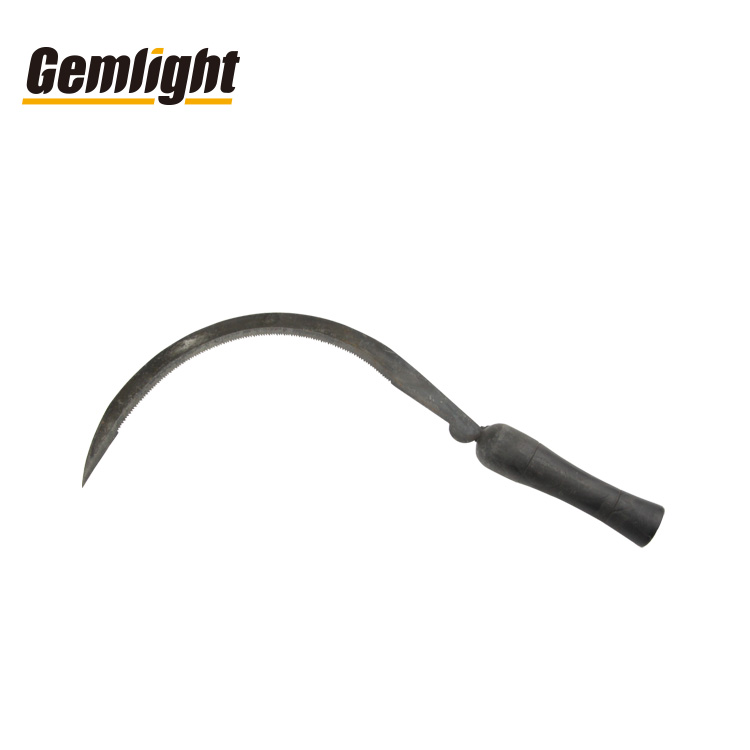News
Small Hand Sickle Tools Perfect for Precision Farm Work
In many parts of Africa, agriculture remains largely dependent on manual labor, particularly in smallholder farms and subsistence-level plots. In this context, the small hand sickle plays a vital role. From harvesting millet in the Sahel to cutting sugarcane in Uganda, these tools are essential for managing a wide range of crops that grow in diverse terrains and climates.
Unlike large machinery, which may be unsuitable due to cost, maintenance, or uneven terrain, the hand sickle offers simplicity, affordability, and precision. Its lightweight design allows farmers—especially women and elderly workers—to manage daily agricultural tasks with ease. In family-operated plots, where efficiency and control are critical, the small hand sickle provides the right balance between cutting strength and maneuverability.
Furthermore, crops like sorghum, maize, cassava, and legumes often require selective harvesting techniques. Using a small hand sickle tool, farmers can avoid damaging the plant base, ensuring regrowth or secondary harvests. This is particularly relevant in sustainable or intercropping systems popular across African nations.
In addition, small hand sickles are used beyond harvesting. They are vital for clearing weeds, trimming feed for livestock, and maintaining kitchen gardens. Their versatile utility makes them a must-have tool in rural households, community cooperatives, and even in government-sponsored agricultural development projects.
As African agriculture continues to modernize, the value of durable, hand-operated tools remains high. The small hand sickle continues to be an indispensable part of farming culture—offering reliability, precision, and adaptability that aligns with the continent’s practical realities.

Selecting the right hand held sickle requires more than just picking up the nearest tool. For African farming environments—often marked by heat, humidity, and mixed terrain—quality and durability are crucial. A well-designed sickle must withstand constant exposure to soil, moisture, and plant sap, while maintaining a sharp edge and comfortable grip.
Blade material is the first consideration. High-carbon steel is widely preferred for its superior hardness and edge retention, especially when dealing with fibrous crops or dry stems. Stainless steel may also be considered in humid regions, such as coastal West Africa, due to its rust resistance.
Handle ergonomics also matter. In many regions, farmers work for hours without mechanical aid. A hand held sickle with a non-slip wooden or rubberized grip reduces fatigue and improves control. Curved blade styles are ideal for cutting grasses and herbs, while serrated or jagged edges help tackle tougher vegetation like sugarcane or maize stalks.
Design should also consider gender and age inclusivity. In regions like Ethiopia or Malawi, women make up a significant share of the agricultural workforce. Offering lightweight versions of hand sickles encourages wider usage while reducing physical strain.
It’s also vital to think about local availability of replacement parts and ease of sharpening. Tools that come with simple maintenance instructions or sharpening stones are better suited for rural distribution.
Lastly, African buyers are increasingly looking for tools that combine traditional utility with modern manufacturing quality. Distributors and importers should prioritize manufacturers offering consistent product quality, safe packaging, and the ability to ship in bulk without compromising durability. A carefully selected hand held sickle can become a trusted farm companion for years to come, supporting farmers through the seasons with unmatched precision and dependability.

As a professional manufacturer and exporter of agricultural tools, our factory offers a wide range of small hand sickles specifically engineered for African farming needs. Our products combine traditional functionality with industrial-grade durability, ensuring long-term performance in demanding field conditions.
We currently export to more than 20 African countries, including Kenya, Nigeria, Ghana, Tanzania, and Zambia. Our catalog includes both straight-blade and curved-blade models, ideal for harvesting millet, maize, sorghum, and even trimming animal feed. Each blade is heat-treated to enhance sharpness retention and forged from high-carbon or stainless steel based on the destination market’s climate and crop type.
Our top-selling model—the Classic African Harvest Sickle—features a 180mm curved blade with a finely polished beechwood handle. It has proven effective in both bush clearing and precise crop cutting. For lighter work, our small hand sickle with a 120mm blade and ergonomic grip is especially popular among female farmers and youth cooperative programs.
Customization is a core strength of our offering. We support OEM and ODM orders, allowing importers to tailor blade shapes, logos, packaging materials, and even handle lengths according to specific regional preferences. Whether you are a wholesaler, NGO partner, or government procurement officer, we provide tailored solutions for bulk sourcing and long-term cooperation.
In terms of logistics, we offer full container shipments and flexible mixed-load options, with all goods undergoing strict quality inspections before dispatch. Our multi-language export support team ensures a smooth transaction process from quotation to delivery.
When it comes to reliable, field-tested hand agricultural sickle for African farming, our factory remains a trusted partner with competitive pricing and unmatched production capacity.

For smallholder farmers across Africa, investing in a quality hand sickle is not just about saving money—it’s about securing productivity, safety, and sustainability in everyday farm work. A poorly made sickle can lead to frequent replacements, hand fatigue, injuries, and even crop damage. In contrast, a sharp, well-balanced tool supports faster harvesting, cleaner cuts, and less physical strain.
Many farmers in Africa still rely on locally made or outdated tools that often lack the blade quality and ergonomic design needed for modern agricultural demands. A shift to better small hand sickle tools helps increase work efficiency—enabling more harvests per day and reducing the risk of tool-related injury.
A quality sickle also means less downtime. With rust-resistant blades and sturdy handles, these tools can withstand seasonal rains and high-humidity storage. This is particularly important in tropical regions where low-quality steel quickly corrodes.
Moreover, the hand held sickle is more than just a tool—it’s a source of livelihood. Whether it’s clearing land for planting, harvesting crops for market sale, or cutting feed for animals, a reliable sickle supports food security and household income generation. In cooperative farming communities, shared tools of high quality can improve collective productivity and reduce replacement costs.
Finally, the affordability of hand sickles makes them accessible even for low-income farmers, especially when purchased in bulk through NGOs, cooperatives, or government distribution programs. By choosing proven, factory-tested hand sickles, farmers invest not only in their farms but in their long-term success.

 Sitemap
Sitemap